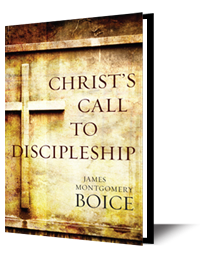
The third teaching is seen from John 14:3, one of the discourses in the upper room. Everybody's troubled because Jesus said he's going away, and he even tells them not to be troubled. He tells them to trust in him, just as they trust in God. He says he's going away to prepare a place for them there, and then he says to them, “If I go and prepare a place for you I will come back and take you to be with me, that you may also be with me where I am." Doesn't Mary's story illustrate that? He was taken away from her by death, but he came back for her.

Now I have looked at this story and asked, as I have done with the other stories we've been studying, why it is that John puts that particular story in the Gospel, and why does he put it here? He already has the story of Peter and John, who act as two male witnesses, which is in accordance with Jewish law for a truthful testimony. Thomas, as well, becomes another witness to the truth of Jesus Christ, when he finally sees Jesus, falls at his feet and says, “My Lord and my God." In fact, that's the very thing that John has written the Gospel to produce. John tells us that Jesus did many other miraculous signs that are not recorded, but these are written that you may believe that Jesus is the Christ, the Son of God, and that believing you may have life in his name. Thus, you have the proof in the first story with Peter and John, and you have the climax in the second with Thomas, and the question is, why the story about Mary in between?

Mary was not looking for a resurrection. She had been there witnessing the crucifixion, and when Jesus died, there was no doubt at all in her mind that everything was over. Whatever faith she had in Jesus as the Messiah died in that instant. Well, she loved him, of course, but she no longer believed that he was the Messiah who was going to deliver Israel. And not only that. Hope died too, because what the Emmaus disciples said was true of them all. They had said, “We had hoped that it was he who should have delivered Israel.” But even though Mary’s faith and hope had died, her love for him because of what he had done for her had not died.

So Mary Magdalene started off and found Peter and John. Now while she was doing that, it began to get a little brighter in the garden, and the women who remained made their way closer to the tomb. They looked in, and there they saw the angels who appeared to them and announced the resurrection. They said, “He's not here. Come, see where the Lord lay. Then go quickly and tell his disciples that he's risen from the dead.” And having received that instruction, the remaining women hurried off to find the disciples.

We come now to John 20, which is the story of Mary Magdalene and her meeting with Jesus Christ at the tomb following the resurrection. As we have been making our way through this study of these characters, it is interesting that most of these encounters with Jesus are unique to John. That's somewhat surprising because we think of the four Gospels as telling the same story. In a sense, of course, they are telling the same story—that of Christ’s coming, his teaching, his arrest, his crucifixion, his resurrection, and his ascension. And yet, when we study these characters we find that most of them aren't even mentioned in the other Gospels.


















